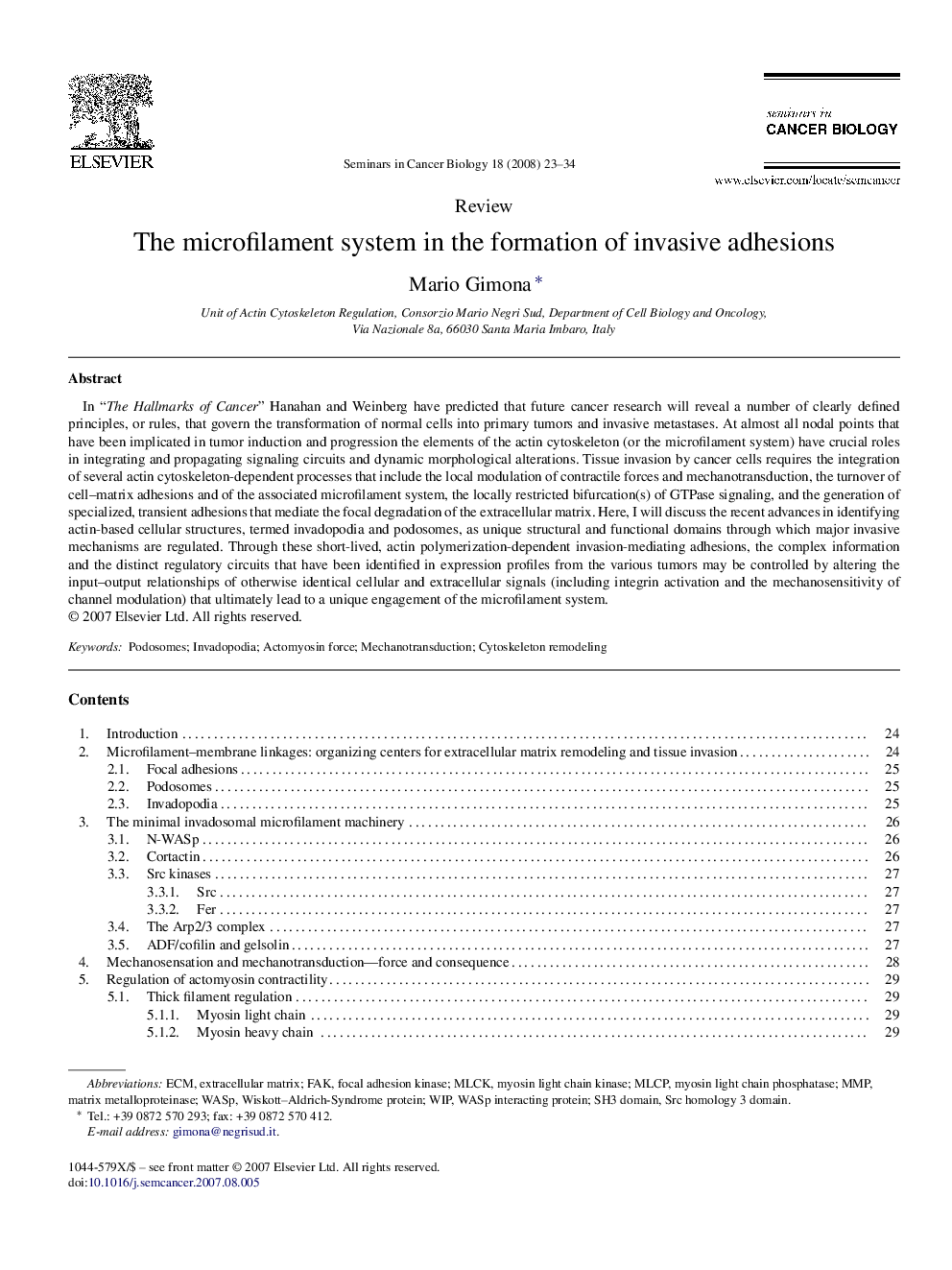| Article ID | Journal | Published Year | Pages | File Type |
|---|---|---|---|---|
| 2023783 | Seminars in Cancer Biology | 2008 | 12 Pages |
In “The Hallmarks of Cancer” Hanahan and Weinberg have predicted that future cancer research will reveal a number of clearly defined principles, or rules, that govern the transformation of normal cells into primary tumors and invasive metastases. At almost all nodal points that have been implicated in tumor induction and progression the elements of the actin cytoskeleton (or the microfilament system) have crucial roles in integrating and propagating signaling circuits and dynamic morphological alterations. Tissue invasion by cancer cells requires the integration of several actin cytoskeleton-dependent processes that include the local modulation of contractile forces and mechanotransduction, the turnover of cell–matrix adhesions and of the associated microfilament system, the locally restricted bifurcation(s) of GTPase signaling, and the generation of specialized, transient adhesions that mediate the focal degradation of the extracellular matrix. Here, I will discuss the recent advances in identifying actin-based cellular structures, termed invadopodia and podosomes, as unique structural and functional domains through which major invasive mechanisms are regulated. Through these short-lived, actin polymerization-dependent invasion-mediating adhesions, the complex information and the distinct regulatory circuits that have been identified in expression profiles from the various tumors may be controlled by altering the input–output relationships of otherwise identical cellular and extracellular signals (including integrin activation and the mechanosensitivity of channel modulation) that ultimately lead to a unique engagement of the microfilament system.
